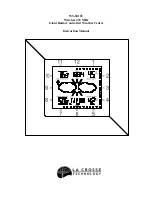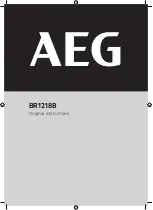
CONVENTIONAL FEATURES
28
mission as with the time-out timer. The following is
more information on this timer.
•
It can be programmed for times up to 7.5 minutes.
•
It is reset when the time between transmissions
exceeds the time programmed for the penalty timer.
•
A warning beep sounds 5 seconds before this timer
disables the transmitter.
•
When this timer disables the transmitter, a contin-
uous tone sounds and the red transmit indicator
turns off. The PTT switch must then be released
until the penalty timer expires (indicated by a beep).
5.8 REPEATER TALK-AROUND
Normally, all transmissions go through a repeater
which usually increases range. However, there may be
times when a mobile is out of range of the repeater and
therefore unable to talk to anyone even though the
mobile being called is only a short distance away. To
allow communication in this situation, repeater talk-
around can be selected. Transmissions then occur on
the receive frequency which permits direct mobile-to-
mobile communication.
Repeater talk-around can be selected if the RTA
option switch is programmed. When talk-around is
enabled by this switch, “RTA ON” is flashed in the
display, and when it is disabled, “RTA OFF” is
flashed. This feature remains enabled during scanning,
and changing channels or turning power off does not
change the selected condition. Talk-around is available
on conventional channels only.
5.9 DISPLAYING TRANSMIT/RECEIVE
FREQUENCY
If the DISP option switch is programmed, it can be
used to display the channel frequency in megahertz.
Pressing this switch toggles between displaying the
standard channel alias and the frequency. The receive
frequency is displayed while receiving and the transmit
frequency is displayed while transmitting. This feature
is available on conventional channels only.
5.10 EMERGENCY ALARM AND CALL
NOTE: The following enhanced conventional emer-
gency features require firmware 1.21/2.0/3.0 or later
and PCConfigure 1.19 or later.
5.10.1 INTRODUCTION
Emergency Alarms and Calls are separate func-
tions that can be individually enabled or disabled on
each analog and P25 conventional system. The Emer-
gency option switch is required for these functions.
Emergency Alarms and Calls are transmitted on the
global (radio wide) emergency zone/channel if one is
programmed. If it is not programmed, the emergency
is transmitted on the selected channel. The emergency
programming of the system to which that channel is
linked controls the emergency operation.
5.10.2 EMERGENCY ALARMS
An emergency alarm is a special transmission that
alerts a dispatcher of an emergency situation. It is sent
automatically by simply pressing Emergency option
switch. The system to which the emergency channel is
linked must have Emergency Alarms enabled. If it
does not, Emergency Alarms are disabled.
In the P25 conventional mode, a special P25
emergency data transmission is sent, and in the
conventional analog mode, an DTMF emergency ID is
sent. This ID is programmed on the Conventional
Radio Wide screen. Refer to Section 5.15 for informa-
tion on the MDC1200 Emergency Alert.
Proceed as follows to send an emergency alarm:
1. If required, select a channel of a system on which
Emergency Alarms are enabled and then press the
EMER
option switch. The radio then automatically
transmits the emergency alarm.
2. Either Normal or Silent operation can be
programmed. With the Normal mode, the red LED
lights, the emergency tone sounds, and
“EMERGNCY” flashes in the display. This indica-
tion continues to flash until the alarm mode is ended
(see step 4).
If silent programmed or the Surveillance mode is
selected (see Section 4.9), none of these indications
occur. If “No Receive Activity During Emergency”
is programmed, receive audio, the front panel LED,
and receive icons are disabled in the receive mode
(firmware Version 1.28/2.6/3.6/4.2 or later only).
*
This feature requires firmware 1.24.1/2.2.1/3.2.1 or
later and PCConfigure 1.22.0 or later.
















































